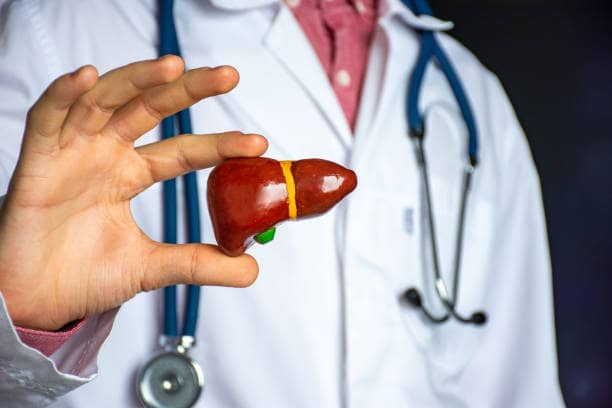What are Prostate Cancer Symptoms: Prostate health is a critical aspect of men’s overall well-being, but it often receives less attention than it deserves. The prostate is a small gland located just below the bladder and in front of the rectum, and its proper functioning is vital for urinary and sexual health. As men age, the prostate can become a source of concern due to conditions like prostate cancer, benign prostatic hyperplasia (BPH), and prostatitis. In this comprehensive guide, we will explore how to treat prostate issues, with a focus on prevention, treatment options, and lifestyle changes to maintain a healthy prostate.

I. Understanding Prostate Health:
Before diving into treatment options, it’s essential to understand the role of the prostate gland and common prostate issues.
- Anatomy and Function: The prostate is a walnut-sized gland that surrounds the urethra, the tube responsible for carrying urine from the bladder out of the body. Its primary functions include producing seminal fluid, which nourishes and transports sperm during ejaculation.
- Common Prostate Issues :
a. Prostate Cancer: Prostate cancer is the most prevalent cancer among men worldwide. It occurs when abnormal cells in the prostate gland multiply uncontrollably.
b. Benign Prostatic Hyperplasia (BPH): BPH is a non-cancerous enlargement of the prostate that can cause urinary symptoms like frequent urination, difficulty starting and stopping urine flow, and weak urine stream.
c. Prostatitis: Prostatitis is the inflammation of the prostate, often caused by infection. It can lead to various urinary and pelvic symptoms.
II. Prevention is Key:
Preventing prostate issues is the best strategy. Here are some lifestyle choices and habits that can help maintain a healthy prostate:
- Diet and Nutrition :
a.Balanced Diet: Focus on a diet rich in fruits, vegetables, whole grains, spare proteins, and healthy fats. Limit the consumption of red meat and reused foods.
b. Antioxidant-Rich Foods: Include foods high in antioxidants, such as tomatoes, broccoli, and berries, as they may help reduce the risk of prostate cancer.
c. Vitamin D: Adequate vitamin D intake is associated with a lower risk of prostate cancer. Consider supplements if you have a deficiency.
- Physical Activity: Engage in regular physical activity, such as brisk walking, jogging, or swimming. Exercise helps maintain a healthy weight and can reduce the risk of prostate problems.
- Maintain a Healthy Weight: Obesity is linked to a higher risk of prostate cancer and BPH. Maintain a healthy weight through diet and exercise to reduce this risk.
- Limit Alcohol and Caffeine: Excessive alcohol and caffeine consumption can irritate the prostate and exacerbate urinary symptoms. Limit your intake of both.
- Hydration: Proper hydration is crucial for overall health and can help alleviate urinary symptoms associated with prostate issues.
III. Treatment Options for Prostate Conditions:
If you are experiencing symptoms related to prostate issues, seeking timely medical advice is essential. Treatment options vary depending on the specific condition:
- Prostate Cancer Treatment:
a. Active Surveillance: For low-risk cases, doctors may recommend regular monitoring rather than immediate treatment.
b. Surgery: Surgical options like radical prostatectomy involve removing the entire prostate gland.
c. Radiation Therapy: This treatment uses high-energy rays to target and destroy cancer cells.
d. Hormone Therapy: It can reduce the production of hormones that fuel the growth of prostate cancer cells.
e. Chemotherapy: Used in advanced cases, chemotherapy drugs target and destroy cancer cells throughout the body.
- Benign Prostatic Hyperplasia (BPH) Treatment:
a. Lifestyle Modifications: Making dietary changes and adopting a more active lifestyle can alleviate mild symptoms.
b. Medications: Alpha-blockers and 5-alpha reductase inhibitors can help relax prostate muscles and reduce symptoms.
c. Minimally Invasive Procedures: Transurethral resection of the prostate (TURP) and laser therapy can remove or shrink prostate tissue.
d. Surgical Options: In severe cases, surgical procedures like open prostatectomy may be necessary.
- Prostatitis Treatment:
a. Antibiotics: If prostatitis is caused by bacterial infection, antibiotics are prescribed. b. Pain Management: Pain relievers and anti-inflammatory medications can alleviate discomfort.
c. Lifestyle Changes: Reducing stress, avoiding irritants like alcohol and caffeine, and using warm sitz baths can help manage symptoms.
IV. Lifestyle Adjustments for Prostate Health:
Even if you don’t have prostate issues, incorporating these lifestyle changes can promote prostate health:
- Kegel Exercises: These exercises strengthen pelvic floor muscles, improving urinary control and sexual function.
- Regular Check-ups: Schedule regular check-ups with your healthcare provider, including prostate-specific antigen (PSA) blood tests and digital rectal exams (DRE) to monitor prostate health.
- Stress Management: Chronic stress may worsen prostate symptoms. Practicing relaxation techniques like meditation, deep breathing, or yoga can help manage stress.
- Smoking Cessation: Smoking is linked to an increased risk of prostate cancer. Quitting smoking is a crucial step toward prostate health.
- Sexual Health: Maintaining a healthy sex life can support prostate health. Regular sexual activity may help reduce the risk of BPH and prostatitis.

V. Emerging Research and Future Direction:
Prostate health research is ongoing, and new treatments and prevention strategies continue to emerge. Some areas of interest include:
1. Precision Medicine: Tailoring treatments based on an individual’s genetic profile and the specific characterstics of their prostate cancer.
2. Immunotherapy: Harnessing the body’s immune system to target and eliminate cancer cells.
3. Advanced Imaging: Improving the accuracy of prostate cancer diagnosis and monitoring through advanced imaging techniques.
4. Nutritional Research: Further exploring the role of specific nutrients and dietary patterns in prostate health.
Conclusion: Prostate health is a critical aspect of men’s overall well-being. By understanding the importance of prevention, seeking timely medical advice, and adopting a healthy lifestyle, men can reduce the risk of prostate issues and improve their quality of life. Remember that early detection and intervention play a crucial role in successfully treating prostate conditions, so don’t hesitate to consult with healthcare professionals for guidance on the best approach for your specific situation. Your prostate health is worth the attention and care it deserves.








2 thoughts on “What are Prostate Cancer Symptoms?”